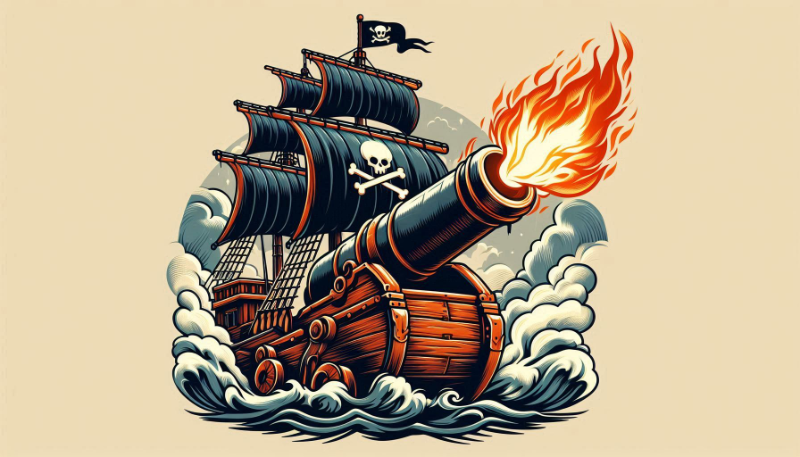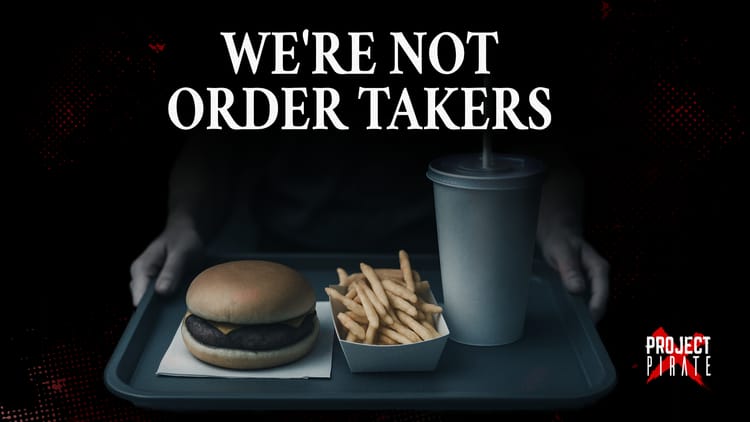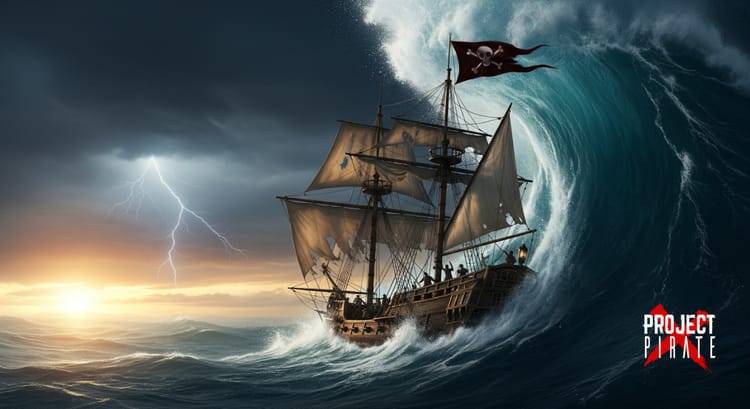Signal Flags: The Art of Pirate PR

In the vast seas of organisational transformation, a ship loaded with innovative technology and a skilled crew may still run aground without one crucial element: effective communication. Just as pirates and naval captains of old used elaborate systems of signal flags to coordinate fleets and share vital information; today's transformation leaders must master the art of what I call "Pirate PR".
Why Communication Fails Many Voyages
Too often, transformation initiatives focus exclusively on delivery milestones, technical implementations and resource management - while neglecting the narrative that ties everything together. The result? Stellar work goes unrecognised, stakeholders grow confused or resistant and teams lose sight of why they embarked on the journey in the first place.
"Brilliantly executed programmes fail in the eyes of the organisation simply because no one understood their value."
The Captain's Log: Documenting the Journey
The captain's log was more than record-keeping; it was the authoritative narrative of the voyage. In transformation initiatives, maintaining a consistent record of decisions, challenges overcome and progress made serves multiple purposes:
- Created an organisational memory that survives personnel changes.
- Provides evidence of progress during challenging periods.
- Establishes credibility through transparent documentation.
- Forms the foundation for broader communications
Modern "Captain's Logs" take many forms: project dashboards, regular status reports and decision registers. The key is consistency and accessibility to ensure the story of your voyage doesn't vanish into the deep.
The Crow's Nest Perspective
Sailors assigned to the crow's nest held a unique vantage point, allowing them to see both the immediate surroundings and the distant horizon. Effective transformation communication requires this dual perspective:
- Connecting daily activities to strategic outcomes.
- Helping teams understand how their work fits into the broader organisational landscape.
- Identifying distant obstacles before they become immediate threats i.e. preemptive and proactive risk management.
- Spotting opportunities that may not be visible from the deck.
Leaders must regularly climb up to this perspective and share what they see!
Port Celebrations: Marking Milestones
No crew would survive a long voyage without the rejuvenation of occasional ports of call. Similarly, transformation teams need structured celebrations of progress, not just at journey's end but throughout (heed this lesson!)
- Recognise the completion of project phases with appropriate ceremony.
- Publicise achievements to the wider organisation.
- Create physical or digital artefacts that commemorate milestones.
- Use these moments to reinforce the purpose behind the work.
These aren't merely morale-boosting exercises but strategic necessities. "Celebrating base camps is how we build the stamina to reach the summit."
Ship-to-Shore Signals: Choosing the Right Flags for Each Message
The most dangerous communication gaps in transformation efforts often exist between:
- The transformation team and operational staff.
- Technical specialists and business users.
- Project leadership and executive stakeholders.
But simply bridging these gaps isn't enough, the format of your signal matters as much as its content. Today's attention economy demands strategic choices in how messages are conveyed:

Cannon Fire: Short-Form Video and Visual Communication
Just as a ship's cannon could capture immediate attention, today's compelling headlines, short-form videos and visual communications cut through the noise:
- Using the best communication channel for your organisation i.e. Slack etc.
- 60-90 second videos explaining a complex implementation in simple terms.
- Infographics that transform data into visual stories.
- Before/after demonstrations that make abstract improvements tangible.
- Animated explainers that simplify complex technical concepts.
Research shows these formats achieve 3-4 times higher engagement than text-based communications. As attention spans shrink, these "cannon shots" become essential for initial engagement before deeper communication can begin.
Signal Lamps: Podcasts and Detailed Communications
For audiences seeking deeper understanding, podcasts and more detailed communications serve as the signal lamps of your fleet - sustained, methodical and information-rich:
- Interview-style podcasts with team members explaining their contributions.
- Technical deep-dives for specialised audiences.
- Executive briefings that connect transformation to strategic objectives.
These require more time investment from the audience but build deeper understanding. The key is recognising when this format is appropriate versus when a quicker signal is needed and the trade off in time invested by the Crew.
Shore Landings: In-Person Events and Experiences
Nothing replaces the impact of "coming ashore" with:
- Roadshows that bring transformation teams to different locations.
- Demo days where stakeholders can experience new capabilities firsthand.
- Town halls that allow for direct question-and-answer interactions.
- Executive walkabouts where leadership demonstrates commitment.
These high-touch communications create visceral connections to the transformation that purely digital signals cannot match.
The sophisticated communicator matches the signal to both the message and the recipient, understanding that executives might need the high level infographic showing key stats while technical teams require the detailed specifications and both might benefit from the in-person demonstration.
The Legend of the Voyage: Building Organisational Lore
Successful voyages become legends; stories that inspire and instruct future voyages. Transformation initiatives should consciously craft their legacy:
- Document lessons learned in accessible formats.
- Create compelling narratives around key breakthroughs.
- Recognise individual contributions within the team's success.
- Connect outcomes to future organisational capabilities.
- Marking milestones by celebrating anniversaries, reflecting on achievements and showcasing the impact of results delivered.
These stories become powerful cultural assets. Teams embarking on new transformation journeys can draw courage from previous successes: "If they navigated those storms, we can weather these."
Navigation Chart for Visibility: Creating Your PR Plan
Every significant transformation initiative deserves a dedicated communication strategy' a "Navigation Chart for Visibility" with elements including:
- Stakeholder mapping: Identify all audiences and their information needs.
- Channel and format selection: Match communication types to audience preferences and attention patterns.
- Cadence planning: Establish rhythm of regular updates versus milestone communications.
- Narrative framework: Develop consistent themes and messages.
- Feedback mechanisms: Create ways to gauge communication effectiveness.
- Resource allocation: Assign responsibility, time and budget for communication activities.
When planning formats, consider the engagement spectrum:
- Low time investment, broad reach: Short videos, infographics, social posts.
- Medium time investment, targeted messaging: Podcasts, blog posts, email updates.
- High time investment, deep impact: In-person events, detailed workshops, immersive experiences.
Remember that this isn't merely an administrative exercise but a critical success factor deserving appropriate investment.
Raising Your Signal Flags
When navigating organisational transformation, raise your signal flags high and often. Communicate not just what you're doing, but why it matters and do so in formats that match modern attention patterns. Celebrate progress toward the destination, not just arrival. Ensure your crew sees their individual contributions within the larger expedition.
Most importantly, remember that transformation without communication is like a ship sailing without signals - your achievements, no matter how impressive, remain invisible to those watching from shore. And in the world of organisational change, visibility isn't vanity - it's the difference between a voyage celebrated in company lore and one that vanishes into the fog of forgotten initiatives.
This isn't optional theatre or self-promotion but rather a fundamental necessity of leadership. Many a capable captain has watched their ship run aground not due to lack of skill or vision, but because they failed to signal their intent and progress. The most technically brilliant transformation can sink beneath the waves of organisational indifference if its value remains uncommunicated!
History doesn't remember silent voyages, no matter how skilfully navigated. The great expeditions that changed the world were those whose stories were told and retold. As Captains of transformation, our duty extends beyond delivery to declaration. Ignore this responsibility at your peril, for in the ledger of organisational memory - what goes uncommunicated might as well have never happened at all.
Your turn, Captain. What signal flags are you flying today?





